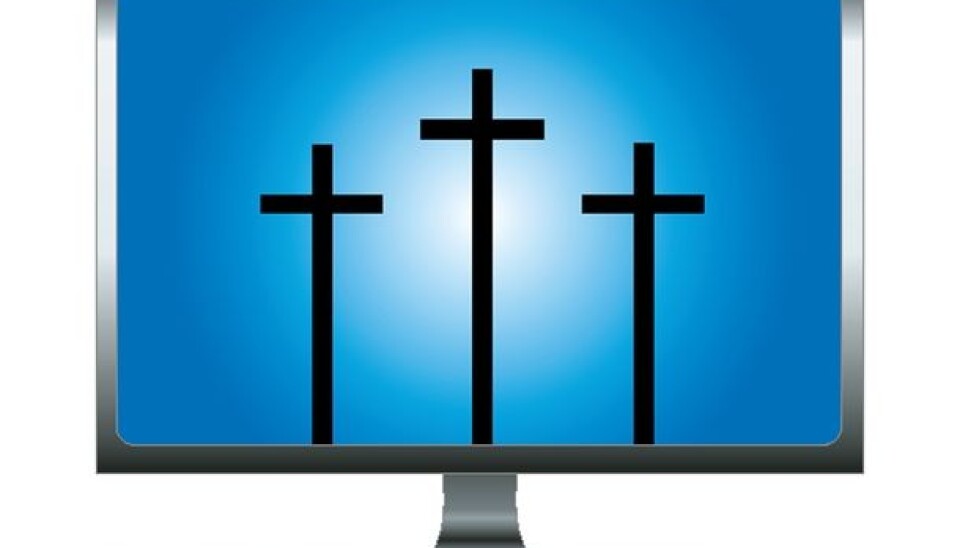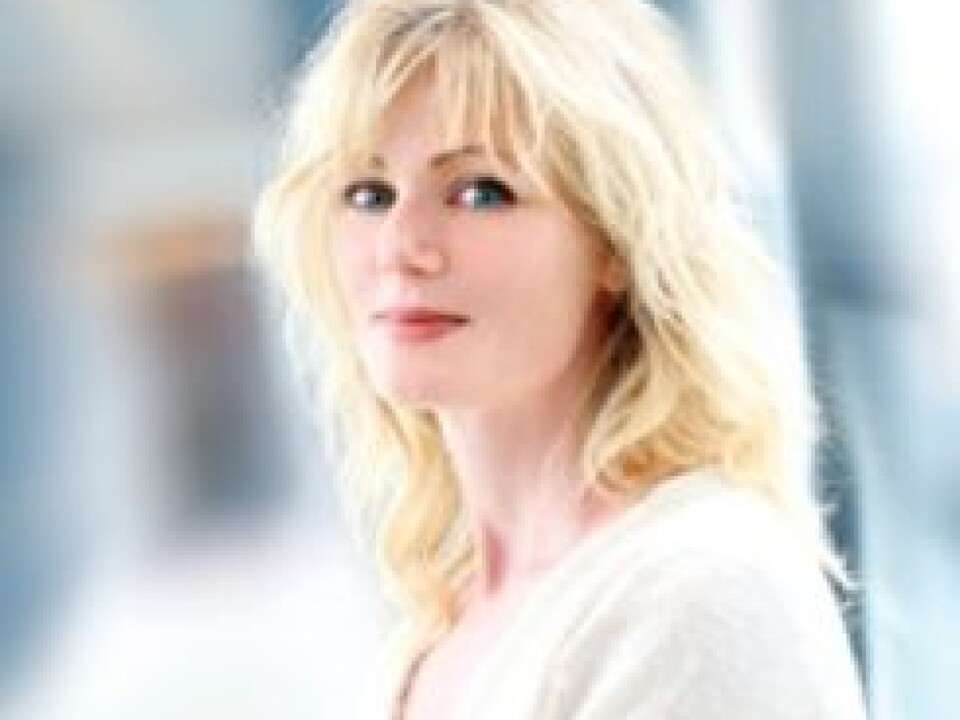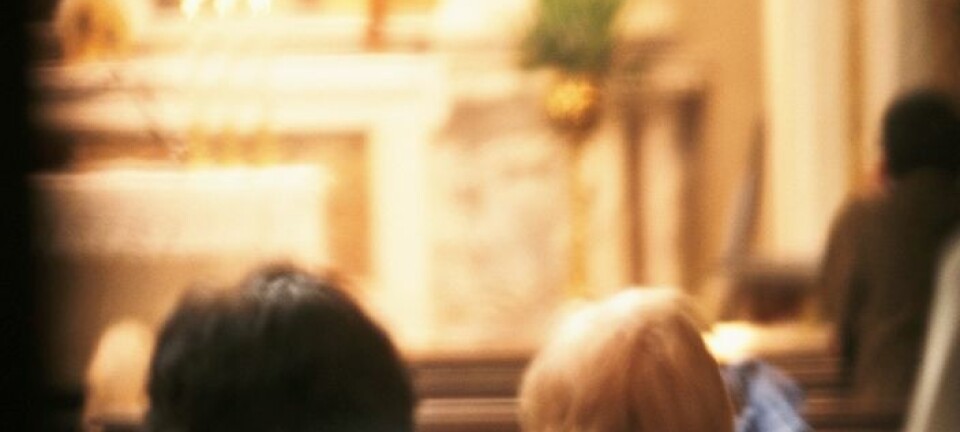This article was produced and financed by University of Stavanger

From grave mounds to Facebook
The way dead people are remembered in social media today are similar to the rituals of Viking-age Norwegians.
Denne artikkelen er over ti år gammel og kan inneholde utdatert informasjon.
Various mediums today seek to communicate across time and space and between the living and the dead. Many of them are also active on Facebook.
“While the ancient Norse stayed physically close to their dead, buried in mounds on the farm, we now maintain a virtual closeness through Facebook and the like, as well as in popular séances,” says Anne Kalvig, assistant professor in the UiS department of cultural studies and languages.
“Along with dedicated memorial sites on the web, particularly for dead children, social media are used as a virtual graveyard – a place people can tend their memory of the dead.”
Kalvigs studies have paid particular attention to similarities between communication with the dead in Norse times and modern spiritualist séances and new religiosity.
The Underworld then and now

“Vikings believed in various realms of the dead, including dwelling with such gods as Hel, Odin, Freyja and Ran, in holy mountains called Helga and in the grave mound on the farm,” says Kalvig.
“The living practised various forms of death cult in order to secure peace for the departed, to obtain blessings and fertility from them, and to ensure the memory and continuity of the kin.”
She believes that we can also talk about a variety of homes of the dead in our own time.
“These include the graveyard, the Christian heaven, all the various realms and dimensions of other religions, spiritualism and the belief in reincarnation."
Among other realms she mentions the cosmos or a world of the spirit characterised by knowledge, love and light, where the souls of the dead spend a time before being reborn.
In Kalvig's view, the internet represents a new contribution as a resting place and “garden of remembrance” in the form of memorial pages on Facebook and dedicated interactive memorial websites.
“The fact that a number of ‘realms of the dead’ of various kinds co-exist does not seem to present a problem for those remembering the dead,” says the researcher.
Fortune teller in Voluspå
Kalvig has observed and analysed spiritualist séances and compared her assessments with analyses of Norse texts such as the Poetic Edda and the sagas or histories.
What view of life the Norse held is uncertain, in part because the sources were written down after the conversion to Christianity and are particularly representative of the warrior aristocracy.
A masculine set of values dominates, even if women are often very much present in the sources – such as the Völuspà (the prophecy of the sibyl).
In the latter, a sibyl or seeress tells chief god Odin about the origins of the created world and the past, and prophesies the future.
“Thou wilt, Father of the Slain,/that well I relate/old tales I remember/of men long ago,” the sibyl says to Odin, using one of the many names he was known by.
The supernatural
Women still dominate in contacts with the supernatural and the dead, Kalvig maintains.
“The question is whether today’s spiritualism can be compared with typical family-oriented female occupations, such as creating scrapbook-type memorial albums, or be better understood as the return of the sibyl.”
She points to similarities between the decorative borders, flowers and calligraphy of such albums, recalling past incidents, and the conciliatory tone of messages from the dead in séances.
“The departed report that they are happy, and want the recipients of their communication to be happy, too,” she says.
The medium conveys a message where forgiveness, acceptance and reconciliation are dealt out in generous portions.
Longing to be remembered
"These activities indicate that people long to remember and to be released from what were perhaps painful and unpleasant experiences, and thus create a memory of reconciliation," says Kalvig.
"The way people flock to mediums like England’s Lisa Williams is partly a matter of entertainment and big business," she notes.
But it also involves powerful emotions, longings and expectations, and above all communication – across time and space and between life and death.
In that respect, Kalvig sees comparisons with the communication people paid for in Viking times from travelling sibyls – which also represented knowledge from “the other side”.
The mystical sibyl
Sibyl or seeress in the Völuspà, who knows more than the gods, had her Earthly counterparts in the women known as völva – witches or prophetesses – in the Norse community.
They could see the past and the future, and could look into other worlds, communicating with the dead and interpreting signs and warnings.
The latter came from such sources as nymphs, elves, goddesses, the Fates (Norns), birds and other powers belonging particularly to that part of the Norse cult these women practised.
Today’s mediums also convey communications from the dead and other beings. They interpret warnings and find lost objects or people.
Religion as diverse practices
According to Kalvig, today’s séances also have spiritual, ritualised practices and standardised formulations, and follow a typical pattern.
The starting point is that the dead are in a dimension ruled by love, often personified as God. Some of the dead are also said to be with the living as guardian angels, or communicate through signs and warnings.
“Those involved in alternative religiosity often call themselves spiritual rather than religious,” Kalvig notes.
“As an academic, however, one must regard their activities as religious. But they adhere to a form of religion with diversified practice, rather than a dogmatic, monotheistic faith.”
Direct parallels
She sees direct parallels between the sibyl in Völuspà who constantly asks, self-knowingly, from her podium “Do you know enough yet, or what” and a medium like Williams.
“At one big show I attended, Williams began the actual séance section, to great jubilation and applause from the audience, by shouting from the stage: ‘Do you want to know everything?’
And a lot of people clearly want to know ‘everything’. Everything that’s needed to forge links between the living and the dead.
“As a participant in séances and an observer of the reactions and tearful joy of the chosen few who get a message from the other side, you get the impression that the ‘everything’ required isn’t always all that much.”
Take spiritual longing seriously
But that was perhaps the case earlier as well, Kalvig believes, and maintains that this form of establishing new memorials can provide greater understanding in several areas.
These include the interaction between the religious and the secular, between what is regarded as “superficial” and “deep”, and between the living and the dead.
She also notes that the segment of new religiosity which involves communicating with the dead has aroused particular public ire, because death is such an important boundary in Christianity.
“But religion is and has always been changing, and both looking back and taking a broader look at developments can help to understand its present status.”
































